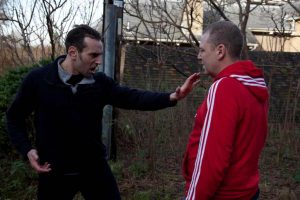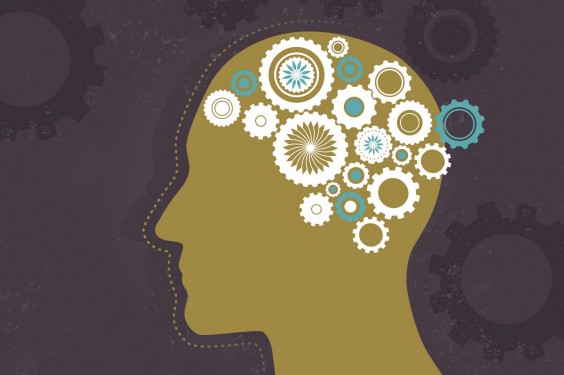Day One – Planting the Seeds
During the first night, Use of Force against a citizen was the opening salvo. One participant felt very strongly about the subject of shooting citizens, and spoke out – “why can’t you just shoot him in the legs?”
And so the journey to enlightenment began. By the end of day 3, it wasn’t an issue anymore for this student. Her viewpoint had been changed, not without a bit of effort, but changed nonetheless. She had been educated.
Now think about what we as Martial Artists do. Many of us are equally indoctrinated into a specific way of thinking. I grant that much of this is due to and out of respect to ‘never question the sensei’, ignorance, and /or personal moral viewpoints – pick your poison. We’ve all done it, and likely continue to do it – until we become enlightened. Until we see or experience that irrefutable evidence to the contrary.
It may come in the form of being beat by someone smaller than you, or even at a belt level or two below you. It really doesn’t matter other than the fact that if it doesn’t happen, you will continue on your path until it does, and let’s hope that’s not too far down the road from and for you today. I hope this article at least convinces you to start down that path – to educate yourself, and to face the ugly truth. You have not been training for reality, but merely playing in a fantasy of what you think reality is.
Indoctrination Principle
As an example, and getting back to my reading/research, you may have heard of the word ‘othering?’ This happens during indoctrination and it’s a way to change your viewpoint to create a precept for direct action against another human being in this case. We’ve all been indoctrinated in some form and at one time or another, but most likely we’ve been exposed to indoctrination continually throughout our lives. It starts in childhood, and continues through adulthood. We go along with it until we no longer do so based on the reality of our experiences and or re-education.
To make soldiers ‘perform’ better, it was determined that they needed to change their way of thinking and feeling – in order to become better and more effective killing machines. To do so, meant learning first what makes them tick, and then learning how to manipulate their thoughts and feelings about the enemy. Simple. But was it truly effective? It’s hard to give a detailed answer. Because effective is also a multiplier – it may have helped with the math side, but the soldiers were broken. The numbers may have given them better results, but at what cost?
During the Viet Nam War, the military machine expanded their indoctrination efforts of our soldiers to great effect. It was done so, but only after the research that was done after WII by S.L.A. Marshall as revealed in Lt. Dave Grossman’s book titled ‘On Killing.’
Our soldiers, young and old were taught to hate the enemy and to ‘other’ them using simple concepts, and by using very simple triggers – words and images. They were taught to treat the enemy as less than human. This type of indoctrination can be very effective, and its ramifications are far-reaching, and go beyond it’s use on the battlefield.
(I suggest that you locate and read Col. Dave Grossman’s book titled ‘On Killing’ for more background and education on this subject as one resource example that comes immediately to mind. It’s enlightening for several reasons.)
What we learn in the typical Dojo environment are many new things: classical ‘respect’, classical kata, and yet we learn a lot of very bad habits as well. We train to control our power, to pull our strikes and kicks, to stop after a point is scored by your partner during sparring sessions, and even to hand over the weapon after you’ve been able to seize it during weapons sessions.
‘Train as you fight, fight as you train’ has become an all too common call to ‘arms’ for far too many Martial Artists and Self-Defense ‘experts’. We have deluded ourselves by using titles to demonstrate our mastery of an art to the uninitiated. Think about this slogan. Tear it apart, and really read it. It’s a special kind of stupid when you really take all of the emotional and egotistical baggage out. ‘Other’ it. Let go of your personal viewpoint and just really get the concept of what I’m telling you here and why the slogan really makes no sense. I hope you can, but many won’t take that challenge easily or willingly.
Fear-Based Marketing
By teaching our students using slogans akin to this one – words that sound cool and make great bumper stickers, or ‘wall’ banners for our social media pages, is it any stretch of the imagination to see the indoctrination principle of marketing slogans like this? “The most deadly art?”, “Krav Maga as taught to the IDF”, “Fight Like a Navy Seal” and other juicy morsels that all have one thing in common – to separate you from your money. “Fear-based Marketing 101.”
In defense of slogans and marketing ploys like this, there really are some ‘systems’ out there that are better than others, yet it’s still all context sensitive. If you are a student that is in fear of what the world has to offer, you’ll likely get sucked in. There is no shame in that, and that’s why it’s good and effective marketing. Been there and done that, for my own reasons, and yes fear is/was a strong selling point.
So what really is the likelihood that you’re going to draw your weapon on someone – let’s just say a gun? Have you researched the legal ability to do so? Have you thought about what it may cost you? Here I strongly suggest that you find and read Marc MacYoung’s book titled ‘In the Name of Self-Defense.’ Do it now if you haven’t already done so. It’s going to not only open your eyes, even if you think you know it all – but it’s going to change your perspective – for the better. It’s what truth looks like, from the perspective of a real-life ‘master of violence.’ That’s not his title, but it could be. Marc makes you look strong and hard at the ugly. He’s seen it, and even done it. He’s here to educate you – but only if you’re smart enough to seek him out.
Now go back and read ‘On Killing’ after you’ve read Marc’s excellent book. Explore your psychological ability to wield that tremendous tool against another human being. I caution you that reality is ahead.
So, these are but two insights and references to get you more up to speed. Do yourself a favor now, and digest that for more than the time it takes to read it. Let it simmer for several days. Contemplate what has been offered up in these two excellent resources.
I can point you to several other excellent reads as well:
- Alexis Artwohl, PH.D. & Loren W. Christensen’s book titled ‘Deadly Force Encoun
- Charles Remsberg’s book titled ‘Street Survival
Educate your mind further. This stuff is enlightening, and uncomfortable at the same time. My goal is to make you face that uncomfortable side of this equation. Look into it deep and hard, and then ask yourself – could I do violence to another human being using my skills and weapon of choice? Can I draw a weapon and use it to stop another human being from existing. It’s not an easy mirror to look into. There are no right or easy answers, but if you don’t ask the question(s), you won’t have the answers if and when you may need them the most.
An Effective Alternate-Facts Cure
So, the ‘cure’ for some of this is to change how and what we study and teach and maybe when. Today, stop and figure this out for yourself, and more importantly for those you are responsible for and to – you, your family and your students.
In Kapap we say “I’d rather be a student of reality, than a master of illusion.” A very responsible and appropriate slogan in context of the purpose of this article.
If you want to test your mettle, educate yourself – read and understand things that make you uncomfortable. If it’s difficult to look into that mirror and honestly assess your ability to do what you are practicing to do to another human being without remorse, you are the bad guy. I’m not saying there may not come a time, or that you may be justified in doing so – it all depends on circumstances and context, but reality isn’t something you go into unprepared. And how does one prepare to take another’s life? Indoctrination. Which leads to a false sense of skill and ability, up and until reality shows up and shows you something you were never prepared for in the first place, then your fantasy world comes down around you. Your reality shatters and leaves you vulnerable, or worse.
The Gun Solution
If you fancy yourself a gun guy, do the research. Again, I suggest researching some of Marc MacYoung’s books – learn about the ‘Dead Man’s Ten’ study as just one example of what you are likely to face. Watch the YouTube videos of Police shoot-outs. These people are skilled practitioners as well, and in context.
Part III is in next weeks issue.





